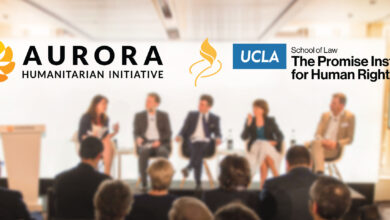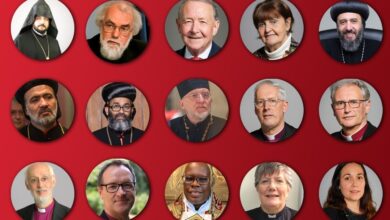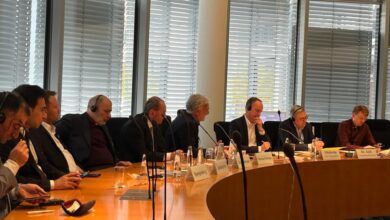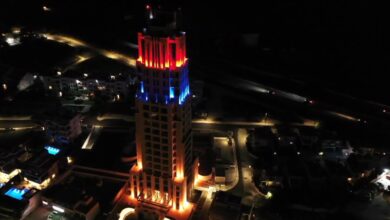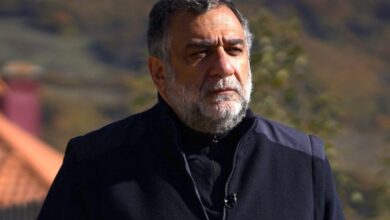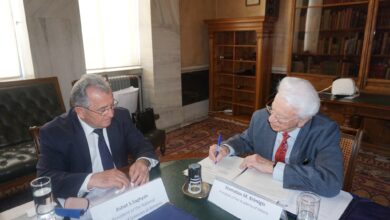Holocaust Museum spotlights 100th anniversary of Armenian Genocide
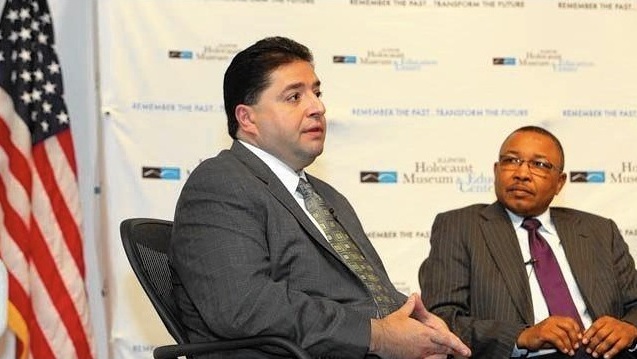
The Illinois Holocaust Museum & Education Center Feb. 8 held a symposium on the Armenian Genocide attended by more than 300 people, The Chicago Tribune reports.
In marking the 100th anniversary of the Armenian genocide with a symposium Feb. 8 at Skokie’s Illinois Holocaust Museum, a panelist concluded that every genocide is unique and yet every genocide is the same.
“The magnitude of them could be different, the causes of them could be different, but there tends to be common elements that you see persistently through most of them,” said Shant Mardirossian, chairman of the Near East Foundation.
One of the most basic is dehumanization of a group of people. Eventually targeted for persecution, those people become regarded as less than human beings so attempts to eliminate them take on a warped and skewed sense of morality.
The most publicized difference about the Armenian genocide, though, is the controversial refusal of the Turkish government to recognize a horrific chapter in history as genocide.
“The Ottoman state certainly deserves the blame for letting this happen,” states the Stanford University Turkish Association. “However, the evidence tells that it is the inability of the state to control its provinces, rather than its intended plan, that lead to the atrocities. The government authority in most of that area in question was limited to a network of alliances with Turkish and Kurdish warlords, over which it had limited control.”
The University of Minnesota’s Center for Holocaust and Genocide Studies suggest its research shows there were 2.1 million Armenians in the Ottoman Empire in 1914, 387,800 left by 1922.
According to Armenian genocide scholar Dr. Peter Balakian, there remains only 30,000 to 40,000 Armenians in Turkey.
Raphael Lemkin, a Polish Lawyer of Jewish descent, first coined the term “genocide” in 1944 to describe the systematic extermination of Armenians and Assyrians during and after World War I.
“Lemkin did so much thinking about the extermination of the Armenians,” Balakian told well over 300 people Feb. 8 at the museum. “It was vital to his entire lifetime project.”
The museum symposium was not the first time the museum has shined a light on the controversy surrounding the Armenian genocide.
Nearly two years ago, it hosted a talk about the Armenian genocide followed less than a month later with a two-day conference on the subject.
Dedicated not only to preserving the history of World War II genocide, but in teaching about genocide all over the world, the museum describes its mission this way: “Remember the past, transform the future.”
The Armenian genocide addresses both parts of that mission. Until the truth is recognized, social justice leaders say, history remains tainted and the future impacted.
Balakian called genocide denial the last step of genocide, echoing a similar refrain from Jewish Holocaust survivor and Nobel Laureate Elie Wiesel.
“Constant and aggressive” genocide denial means that first they kill the victims, and then they kill their memories, Wiesel has said.
Dr. Stephen Smith, executive director of the University of Southern California Shoah Foundation – Institute for Visual History and Education, noted that only 30 years marks the beginning of the Armenian genocide and the end of the Holocaust.
Just as it did in recording the live testimony of Holocaust survivors, the Shoah Foundation has played a role to preserve testimonies from first-hand witnesses of the Armenian genocide.
Shown at the Feb. 8 symposium was a partial interview providing a harrowing account of atrocities observed by a witness.
“I saw with my own eyes a neighbor of mine…They took hold of her by the hair and [threw] her into the burning fire,” she recalls. Her 4-year-old sister died on a train during a deportation and was buried by the side of the railroad tracks, she said.
The museum’s symposium also addressed American response to the Armenian genocide during and after 1915.
The Near East Relief mobilized ordinary citizens to raise more than $117 million for emergency relief and services — the equivalent to $1.25 billion today.
More than one million Armenian refugees, including 132,000 orphans were saved because of the effort, which became a model for citizen and social justice philanthropy.
Most in the audience Feb. 8 were of Armenian descent, coming from throughout the Chicago area to learn more about the Armenian genocide and support its recognition.
Countries, including the United States, have been accused of dragging their feet in making such a declaration — in large part because of politics and their relationships with Turkey, panelists said.
“The United States Congress has not forgotten about this genocide,” assured U.S. Rep. Robert Dold (R-10), chairman of the Congressional Armenian Caucus.
Dold is one of the lead sponsors of an upcoming resolution on the Armenian genocide.
“Simply put,” he told the crowd, “this resolution will shine a spotlight on the genocide denial and show that the United States Congress firmly stands on the side of truth.”
In some of the Feb. 8 comments, though, a relatively few still questioned the legitimacy of calling the horrific events of 100 years ago a genocide, in line with the position of Turkey.
Panelist Omer Ismail, senior adviser to the Enough Project and eyewitness of the genocide in Darfur, had an answer for them.
He said it’s time to bury the hatchet, acknowledge the truth and to move forward.
“Come out of this and be clean about it and tell your own government to move on,” he said.



